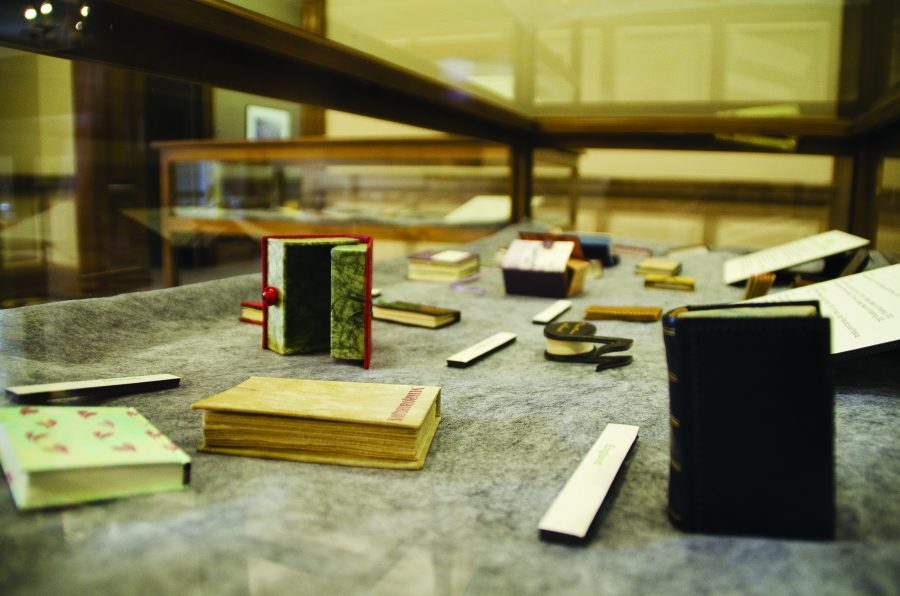 Three inches is close to the size of the average golf tee, travel-sized toothpaste and the maximum width, length and height of a miniature book, as dictated by the Miniature Book Society.
Three inches is close to the size of the average golf tee, travel-sized toothpaste and the maximum width, length and height of a miniature book, as dictated by the Miniature Book Society.
Ninety-six of these tiny manuscripts, which belong to the Kate Webb Ragsdale Miniature Book Collection, part of The University of Alabama’s W.S. Hoole Special Collections Library, are now on display in Gorgas Library, alongside a traveling exhibit owned by the MBS. Placed in chronological order, the collection spans nearly 230 years, beginning with a Bible from 1780 and ending with Sidney Berger’s “Wise by a Nose at the Finish,” circa 2008.
The collection was purchased in 2013 in memory of the late Kate Ragsdale, who retired in August 2006 after serving as both a librarian and planning officer for UA Libraries. Ragsdale visited a miniature book exhibit held in Gorgas in 2012 with her then 12-year-old granddaughter Eliza, and both became enchanted by the displays, according to a letter Ragsdale sent to organizers.
(See also “Book Arts students display work“)
“We thought the collection would be a really nice way to honor her memory,” said Donna Adcock, director of public relations for UA Libraries. “She really enjoyed the miniature books.”
These original works of art are not celebrated strictly for their appearances. Anna Embree, an associate professor of the University’s book arts program, said printing books in miniature offers a new challenge to book-making enthusiasts.
“The challenge lies in scaling everything down and thinking about how the application of materials can function in a nice way,” she said.
However, aesthetics of bookmaking aren’t lost when working in minuscule, Embree said.
“There’s a very charming aspect to [these] books, some novelty,” she said. “There’s almost a built-in audience for makers because of those who collect miniature books,” Emma Sovich, a graduate student earning her MFA in book arts, said.
(See also “Book Arts program exhibit explores patterns“)
“Because of their size, you have to physically hold a miniature book closer to you,” Sovich said. “This really allows you to interact with it.”
Fellow book arts student Caroline Anderson said working on a smaller level allows for greater financial freedom when dealing with production costs.
“It’s really cost-effective since you use a lot less material,” Anderson said. “I can use more expensive, handmade paper that costs $25 a sheet because I only need three sheets, versus 10 or more if we’re working on a full-sized book.”
Such details can be noted in the books on display, with colorful covers in materials such as leather and silk. The exhibit represents a variety of themes, with book subjects ranging from almanacs to biblical texts, as well as foreign books representing Israel, Russia and Switzerland. A 12-book set of Shakespeare’s works is also on display.
The collection will be on display through May and can be found in the Pearce Foyer, located on the second floor of Gorgas Library.
(See also “MFA student displays book arts in exhibit“)







